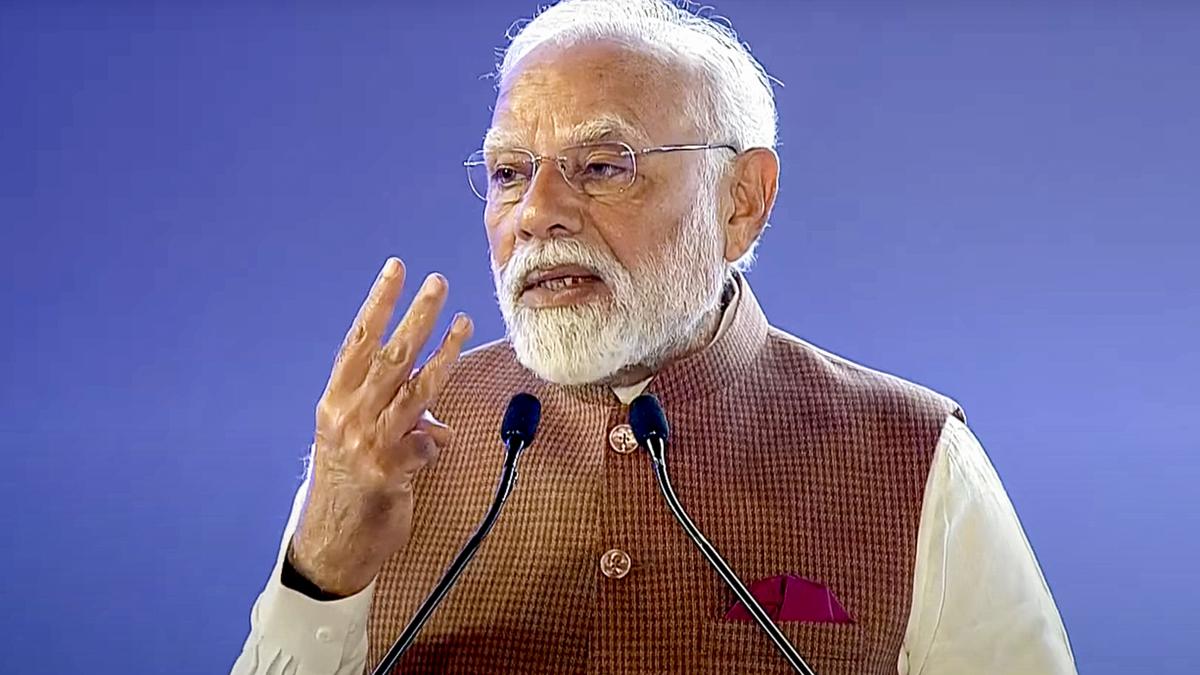ARTICLE AD BOX
Last Updated:May 28, 2025, 14:03 IST
3 YouTubers have accused ANI of demanding payments to lift copyright strikes over seconds-long clips. The dispute has sparked debate over fair use and how platforms police content

YouTube allows rights holders to file copyright complaints through an automated process. Three strikes within 90 days typically result in channel termination. (Representative Image)
A wave of allegations against Asian News International (ANI), one of India’s largest news agencies, has triggered a digital uproar. Prominent YouTubers including Mohak Mangal, Rajat Pawar, and Thugesh have accused ANI of misusing YouTube’s copyright strike system to target independent creators and then allegedly demanding hefty sums in exchange for withdrawing those strikes.
The controversy has since escalated into a larger debate over the boundaries of fair use, the role of copyright in public-interest content, and YouTube’s mechanisms for dispute resolution.
The Allegations
The controversy began with YouTuber Mohak Mangal’s video titled Dear ANI, released on May 26. In the 13-minute video, Mangal accused news agency ANI of exploiting YouTube’s copyright enforcement mechanism to issue takedown notices against creators. Specifically, he alleged that ANI had issued two copyright strikes against his channel for using video clips lasting just 9 and 11 seconds, drawn from ANI footage related to the Kolkata rape case and Operation Sindoor.
Mangal argued that these clips were used within the framework of commentary and analysis, qualifying as fair dealing under Indian copyright law. However, the more serious allegation was what followed. According to Mangal, legal representatives acting on ANI’s behalf contacted him privately and demanded a payment between Rs 45–50 lakh to retract the copyright strikes. He claimed he was told that failure to comply would result in a third strike, which would trigger automatic deletion of his channel under YouTube’s three-strike policy.
Mangal’s video quickly gained traction, prompting other creators to speak out. YouTuber Rajat Pawar alleged he had faced a similar situation. He said ANI had issued two strikes on his videos and then offered to remove them if he either paid a penalty or signed up for an annual licensing package worth Rs 18 lakh. Pawar claimed he was warned that failure to cooperate could also result in his channel being taken down.
Shortly after, popular comedian and content creator Thugesh said he too had been struck by ANI for a 2-second video snippet. In his case, he alleged that ANI representatives demanded Rs 15 lakh to lift the strike. Thugesh described the demand as excessive, especially given the negligible length of the clip and the broader context of humour and commentary in which it was used.
What Is Fair Dealing Under Indian Law?
Under Section 52 of the Copyright Act, 1957, certain uses of copyrighted material are not considered infringement. These include:
- Fair dealing for private or personal use, including research
- Criticism or review, whether of that work or of any other work
- Reporting of current events and affairs, including the publication in a newspaper or magazine or broadcast
- Educational use, including classroom teaching
Fair dealing does not allow wholesale reproduction, but short clips used with commentary, critique, or for news purposes are widely accepted as non-infringing in India’s legal framework. The creators argue that their use of ANI’s footage was transformative and fell within these boundaries.
ANI Silent, PTI Offers Alternative
While ANI has not issued any public statement on the allegations, the Press Trust of India (PTI) addressed the broader concerns faced by content creators. In a post directed at the YouTube creator community, PTI said it remains committed to credible journalism and ethical business practices.
To support responsible content creation, PTI announced that it is offering individual YouTube creators “highly affordable access" to its video footage for use on YouTube and other social media platforms.
YouTube’s Copyright Strike Policy
YouTube allows rights holders to file copyright complaints through an automated process. Three strikes within 90 days typically result in channel termination. Critics argue that this system lacks nuance and disproportionately empowers large copyright holders over individual creators.
YouTube Responds, But Keeps Distance
While YouTube has not issued a broad public statement on the ANI controversy, a company spokesperson did respond to Financial Express, clarifying the platform’s role. “It’s not up to YouTube to decide who owns the rights to content," the spokesperson said, adding that the platform provides tools for both copyright holders to make claims and for uploaders to dispute them.
The platform said it reviews takedown requests to ensure they meet legal requirements and do not exhibit signs of systemic abuse. YouTube also highlighted that users may file counter-notifications if they believe their content qualifies for copyright exceptions such as fair use or fair dealing.
YouTube India And Previous Copyright Disputes
This is not the first time YouTube India has been at the centre of such disputes:
- In 2020, several creators raised concerns when their videos featuring short clips from TV news were removed following complaints by news channels.
- In 2022, an independent journalist’s channel was temporarily suspended after a news agency issued strikes for using 15-second news excerpts in an explainer.
- Legal appeals in these cases typically resulted in reinstatement, but the process was slow and opaque.
These incidents highlight systemic issues with automated takedowns, a lack of culturally localised moderation, and inadequate redress mechanisms for smaller creators.
Political Reactions
Trinamool Congress MP Saket Gokhale has written to Google LLC, seeking clarity on YouTube’s copyright enforcement policies. In his public statement, he alleged that copyright strikes were being used as a form of extortion against independent creators and said the matter merited parliamentary scrutiny.
ImportantRegarding copyright strikes against YouTube creators in India for use of clips from wire agencies
Have received messages from numerous YouTube creators in India about their content being subject to copyright strikes merely for the use of a news clip from a news wire… pic.twitter.com/LloRRkaWKa
— Saket Gokhale MP (@SaketGokhale) May 26, 2025
A Call for Reform
The dispute has amplified ongoing conversations about the way copyright is enforced on digital platforms, particularly when it involves brief news footage or commentary. In the wake of the allegations, several content creators, journalists, and digital observers have pointed to structural gaps in current systems — and discussed areas where greater clarity and safeguards may be needed.
Some of the key issues being highlighted include:
Lack of clarity on fair use/fair dealing in digital spaces
While India’s Copyright Act provides fair dealing exemptions for criticism, review, and news reporting, creators say these provisions are often overlooked in platform enforcement. There is growing discussion about the need for clearer guidance — both from platforms and media rights holders — on what constitutes permissible use in video commentary or explainers.
Absence of a review step before strikes are issued
Concerns have been raised about the ease with which copyright holders can issue takedown notices, even for short clips. Some creators and commentators have suggested that platforms could consider introducing a basic review or notification process — particularly in cases involving limited use for commentary or education — before formal strikes are applied.
Limited options for appeal before channel termination
Under YouTube’s three-strike policy, a channel can be removed within 90 days if strikes are not successfully challenged. Creators have pointed out the lack of a dedicated appeal layer or human moderation before such a major action is taken — and have questioned whether the current system gives smaller content producers enough room to defend themselves.
Need for transparency in how enforcement tools are used
As allegations of large financial demands linked to copyright strikes have surfaced, there is renewed interest in whether platforms can monitor and disclose how frequently such tools are used, and by whom. Some journalists and digital rights advocates have said that greater transparency could help prevent potential misuse.
While ANI has not issued a statement in response to the allegations, it’s worth noting that under copyright law, media organisations do have the right to protect proprietary footage — even if it appears briefly in third-party videos. In India and globally, news agencies often monetise their video archives, and protecting the commercial value of their material is a standard industry practice.
Moreover, platforms like YouTube typically require rights holders to actively monitor unauthorised usage themselves. This may explain why agencies employ enforcement tools proactively — particularly in an environment where content is quickly replicated and redistributed without licensing.
These tensions reflect a broader challenge: how to balance the legitimate rights of media organisations with the creative freedoms of independent creators — especially when the line between news, opinion, and digital commentary continues to blur.
- Location :
- First Published:
News india The ANI Vs YouTubers Dispute: Copyright, Claims And The Question Of Fair Use



.png)
.png)
.png)
















 1 week ago
21
1 week ago
21








 English (US) ·
English (US) ·